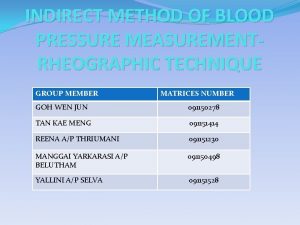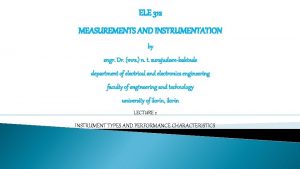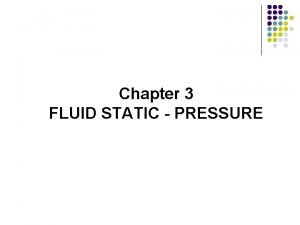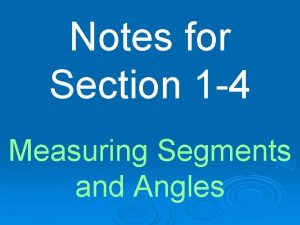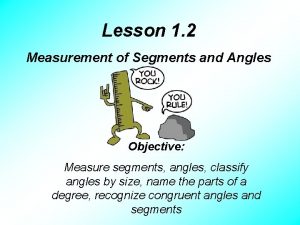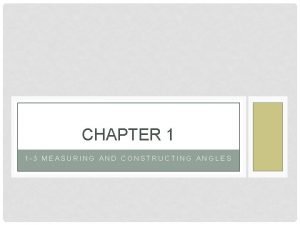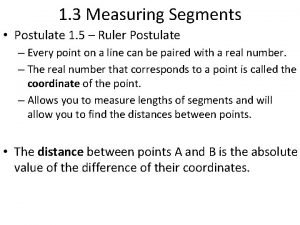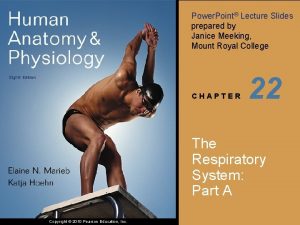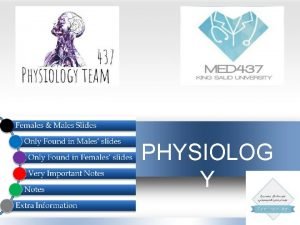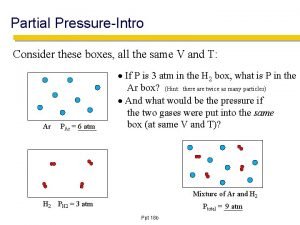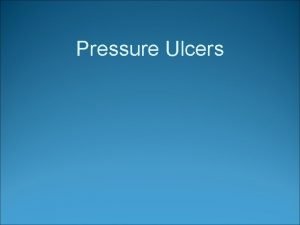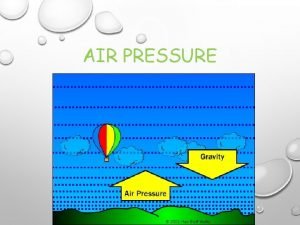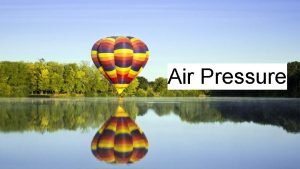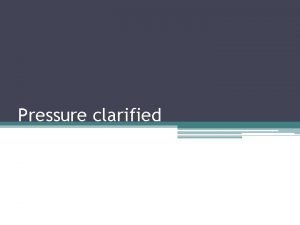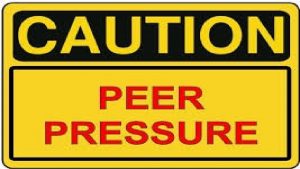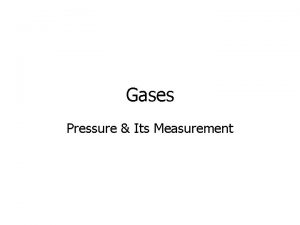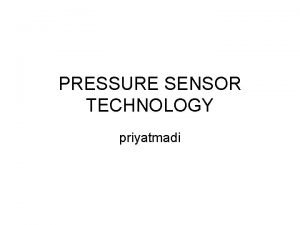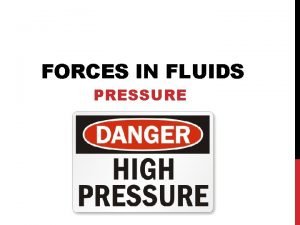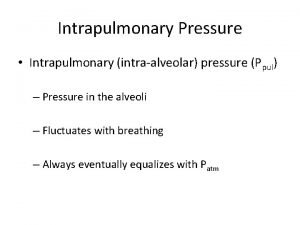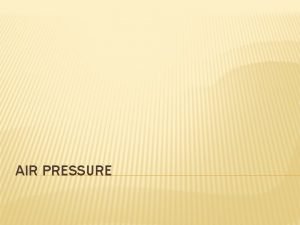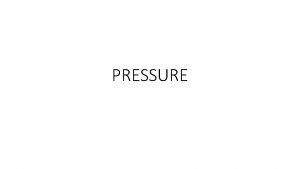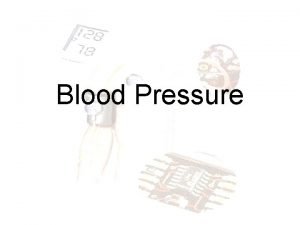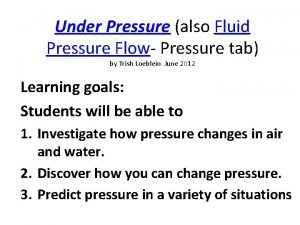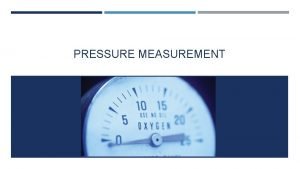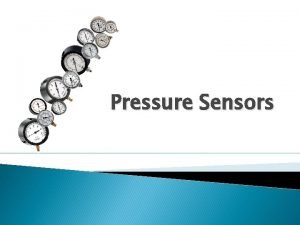Measuring Pressure More Practice Measuring Pressure More Practice
























- Slides: 24

Measuring Pressure: More Practice

Measuring Pressure: More Practice

Measuring Pressure: More Practice

Measuring Pressure: More Practice

Measuring Pressure: More Practice

Measuring Pressure: More Practice

Pascal’s Principle: Student Success Criteria I can state Pascal's principle, explain its applications in the transmission of forces in fluid systems, and conduct an laboratory investigation to demonstrate it.

Pascal’s Principle SPH 4 C

Compressibility Recall that liquids are not very compressible: their volume remains more or less constant even if pressure is applied.

Pascal’s Principle Therefore, pressure applied to an enclosed liquid is transmitted to every part of the liquid and to the walls of the container. A hydraulic braking system transfers pressure from the brake lever through the system.

The hydraulic press Pascal used this principle in the design of a device called the hydraulic press: a device in which a small force on a small piston is transmitted through an enclosed liquid and applies a large force on a large piston.

The hydraulic press I. e. , the pressure (p. S) on the small piston equals the pressure (p. L) on the large piston: If A is increased, then F is also increased.

The hydraulic press: Example A force of 14 N is applied to a piston of area 0. 01 m 2, which is connected to another piston of area 0. 25 m 2. What is the force on the larger piston?

The hydraulic press: Example A force of 14 N is applied to a piston of area 0. 01 m 2, which is connected to another piston of area 0. 25 m 2. What is the force on the larger piston?

The hydraulic press: Example A force of 14 N is applied to a piston of area 0. 01 m 2, which is connected to another piston of area 0. 25 m 2. What is the force on the larger piston?

The hydraulic press: Example A force of 14 N is applied to a piston of area 0. 01 m 2, which is connected to another piston of area 0. 25 m 2. What is the force on the larger piston?

. Mechanical advantage The Ideal Mechanical Advantage (IMA) of the system would be: & Actual Mechanical Advantage (AMA) of the system would be

. Mechanical advantage The Ideal Mechanical Advantage (IMA) of the system would be: & Actual Mechanical Advantage (AMA) of the system would be

. Mechanical advantage The Ideal Mechanical Advantage (IMA) of the system would be: & Actual Mechanical Advantage (AMA) of the system would be

Distance However, since the volume of the larger cylinder is obviously larger, the distance the larger cylinder is displaced is smaller.

Brakes Car brakes incorporate both levers and hydraulics: the distance from the pedal to the pivot is four times the distance from the cylinder to the pivot, so the force at the pedal will be increased by a factor of four before it is transmitted to the cylinder. (2 nd class lever).

Brakes The diameter of the brake cylinder is three times the diameter of the pedal cylinder, increasing the area and therefore the force by a factor of nine. All together, this system increases the force of your foot by a factor of 36 (4 x 9 = 36).

Brakes So if you put 100 N of force on the pedal, 3600 N will be generated at the wheel squeezing the brake pads

More Practice Pascal’s Principle Lab Activity
 More more more i want more more more more we praise you
More more more i want more more more more we praise you More more more i want more more more more we praise you
More more more i want more more more more we praise you Rheographic method of blood pressure measurement
Rheographic method of blood pressure measurement Chapter 16 measuring and recording vital signs
Chapter 16 measuring and recording vital signs 16:3 measuring and recording pulse
16:3 measuring and recording pulse Why is graphing tpr so important?
Why is graphing tpr so important? Indicating instruments and instruments with a signal output
Indicating instruments and instruments with a signal output How to find pressure difference in manometer
How to find pressure difference in manometer Why are vital signs recorded on a graphic record
Why are vital signs recorded on a graphic record Measuring and recording blood pressure
Measuring and recording blood pressure Why is mass more useful than weight for measuring matter
Why is mass more useful than weight for measuring matter How do you read a graduated cylinder
How do you read a graduated cylinder Measuring segments
Measuring segments Congruent line segment
Congruent line segment Vertical angles
Vertical angles 1-4 practice measuring angles
1-4 practice measuring angles Postulate 1-3
Postulate 1-3 Pressure tolerant vs pressure sensitive
Pressure tolerant vs pressure sensitive Pressure support vs pressure control
Pressure support vs pressure control Continuous bedside pressure mapping
Continuous bedside pressure mapping Intrapulmonary pressure
Intrapulmonary pressure Starling's equation
Starling's equation How to find partial pressure from total pressure
How to find partial pressure from total pressure Intrapleural pressure vs intrapulmonary pressure
Intrapleural pressure vs intrapulmonary pressure Regional metamorphism
Regional metamorphism


